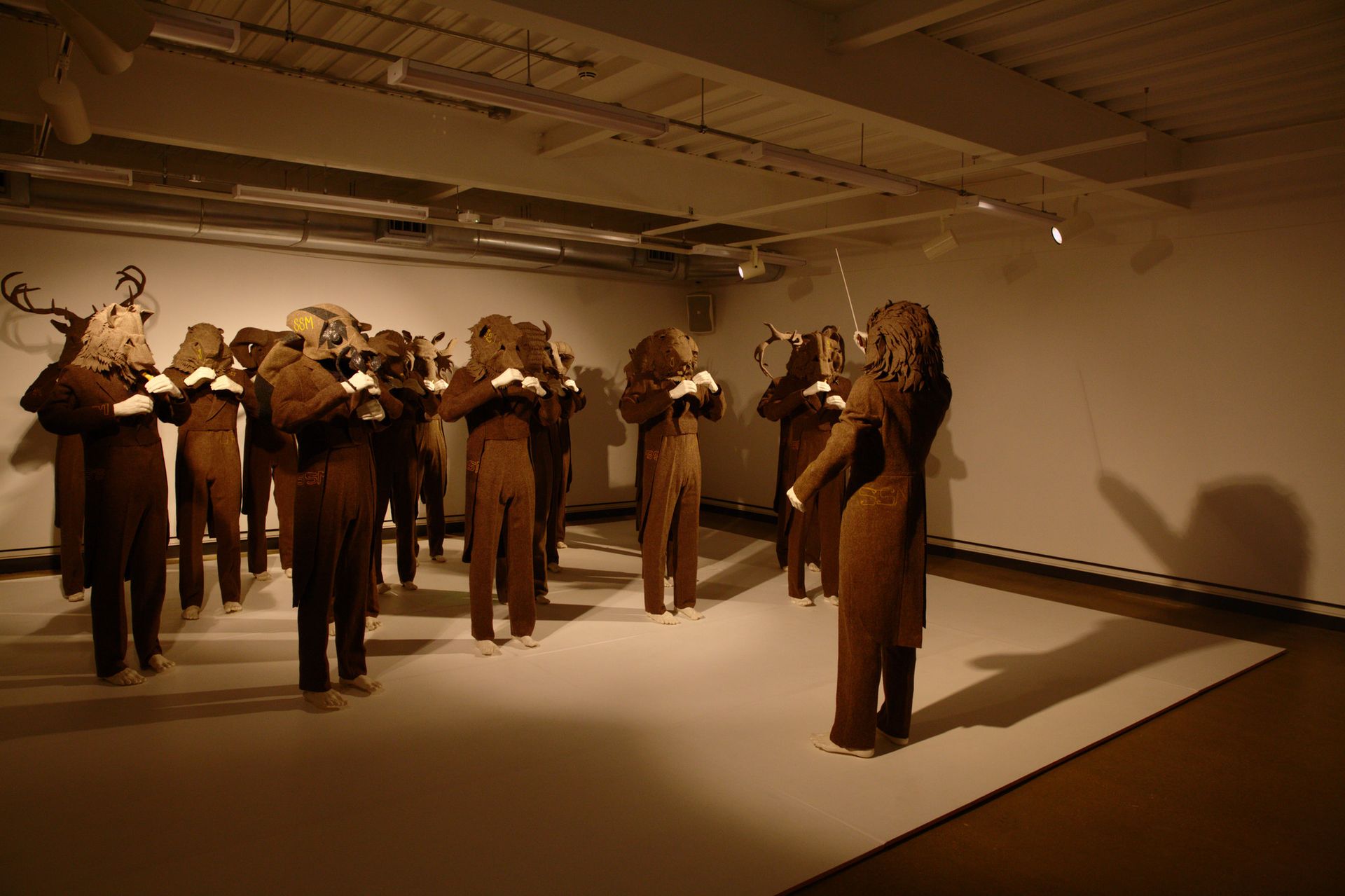Dignitaries and journalists in Leicester gather in a white cube, the natural habitat of contemporary artists worldwide. But here they lie in wait for prey of a different kind, not to be found on the international circuit of fairs and biennials. Their quarry is the rarest of species, the British “national treasure”. Just three months shy of his 90th birthday, his white hair, animated facial expressions and soothing voice are unmistakable… He is Sir David Attenborough.
On Friday, 29 January, the BBC naturalist inaugurated a £1.5m gallery extension at the Attenborough Arts Centre, part of the University of Leicester. Founded in 1997 under the patronage of his late brother, the filmmaker Richard Attenborough, the free-entry centre is dedicated to socially-engaged and inclusive programmes across the arts. The 500 sq. m extension makes it one of the largest exhibition spaces for contemporary art in the East Midlands region. It has been funded by Arts Council England, the university and more than 1,000 public donations.
With three temporary exhibitions a year, the centre’s international contemporary art programme will “prioritise artists with a social conscience,” says the university’s president and vice-chancellor, Paul Boyle. After a group exhibition last year, the next show is by Lucy and Jorge Orta, the Paris-based married couple who have collaborated since the 1990s on art inspired by environmental issues.
The sculptures and installations on view at Attenborough Arts (until 24 April) span the past two decades of the Ortas’ career and three of their long-running projects, Antarctica, Amazonia and OrtaWater. Though the projects derive from the artists’ research expeditions to the South Pole (2007) and the Peruvian Amazon (2009), the generic titles reflect the big themes of their work. “Ideas come and go between different bodies of work… They’re interconnected,” Lucy Orta says. “It’s difficult to dissociate water scarcity from migration or climate change from species loss; food, health, the state of the planet.”

True to a sculptural practice built from military surplus and other transformed objects, the Ortas often adapt past works to fit new contexts. The birdsong soundscape Symphony for Absent Wildlife, a commission for the Leicester exhibition, reconfigures a 2014 performance staged during the Nuit Blanche festival in Calgary. In place of the live musicians are plywood figures with ceramic hands and feet created by Glasgow Sculpture Studios. The piece is due to travel to Turner Contemporary in Margate next January.
The Ortas, whose new works draw on oral history and myths, started working with sound “because it triggers an emotion,” Lucy says. When asked how art compares with science in influencing environmental debate, she agrees with David Attenborough. “Science provides one language in which you can investigate things, which perhaps doesn’t make an immediate appeal to the emotions. But art does it the other way round,” he says.

